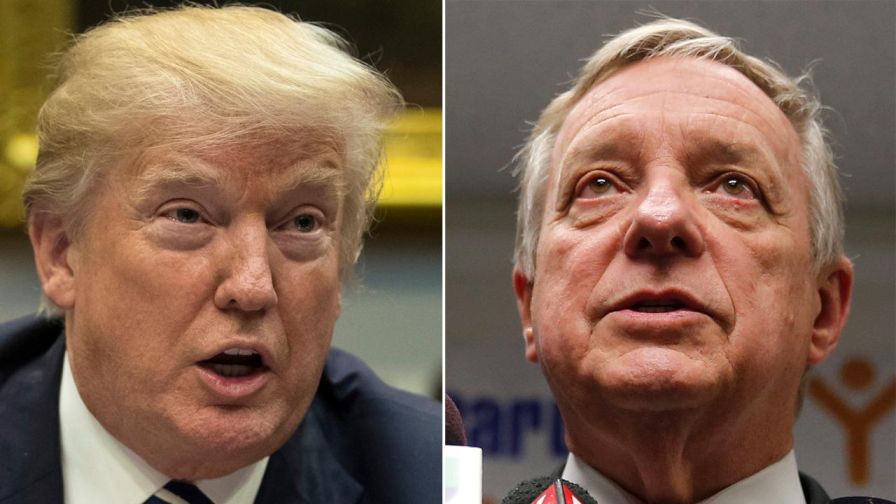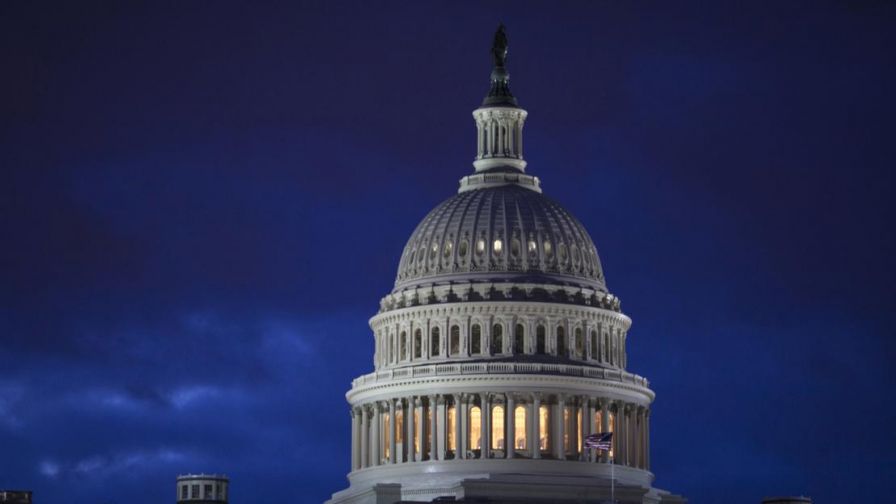What happens during a government shutdown? 7 things you should know
What happens during a government shutdown? 7 things you should know
Stirewalt: DACA controversy makes gov’t shutdown more likely
Fox News politics editor says President Trump needs Sen. Dick Durbin on his side for tough upcoming negotiations on immigration reform and government funding.
It may be a new year, but Congress is returning to the same old challenge it left behind in 2017 – agreeing on a budget.
And the deadline is looming. Lawmakers are trying to achiever a compromise on the Obama-era Deferred Action for Childhood Arrivals (DACA) program, build a wall on the Mexican border and agree to a limit on how much Congress can spend on military and domestic programs in order to prevent a government shutdown by next Friday.
Fox News asked Marc Goldwein, senior policy director of the Committee for a Responsible Federal Budget – a bipartisan, nonprofit organization that educates the public on fiscal policy issues – to explain a government shutdown, and he answered seven basic questions about the process that Americans should know.
What causes a government shutdown?
A shutdown occurs when Congress and the president fail to sign into law 12 appropriations bills (which determine spending for specific government agencies) in order to continue providing funding for government operations.
How can you prevent a government shutdown?
To avoid a shutdown, members of Congress can give themselves an extension, known as a continuing resolution (CR). The temporary funding measure keeps the federal government open and allows lawmakers more time to negotiate the remaining appropriations bills.
“The bar for a CR is pretty low. You’re not agreeing to anything new politically; it’s a no-brainer,” Goldwein told Fox News.
Shutdown avoided: Interim spending bill pushes work to 2018
Congress returns in January with long to-do list; Chad Pergram explains.
That’s exactly how the government has been operating since Oct. 1.
Funding has been extended twice since then. The House and Senate approved a temporary spending bill on Dec. 21, and Trump signed the measure to keep the government funded through Jan. 19.
With the frequency of CRs, Goldwein says he doesn’t anticipate a government shutdown.
“I expect as long as we can we’ll continue at least kicking the can with a CR,” Goldwein said. He added that he was “not saying it won’t happen, but it’s almost always in everyone’s interest to keep lights on rather than to shut the government down.”
How long does a government shutdown last?
As long as it takes. Congressional leaders from both parties have to reach an agreement to fund the government.
It usually takes a weekend for this to happen.
“We’re talking days or weeks – not months,” Goldwein said.
The federal government would be forced to shut down “nonessential services.” Who would be affected?
“Essential staff at top level agencies would continue working, but most federal employees whose jobs aren’t vital would likely be sent home,” Goldwein said.
For example, those who work at national parks, monuments and museums would be told to go home.
“It doesn’t feel awesome to be told you’re not an essential employee. It’s a little demoralizing to go home because you’re not important,” Goldwein said.
In the 2013 shutdown, roughly 850,000 employees were furloughed per day, according to the Office of Management and Budget.
But not everyone is required to take unpaid leave.
The president, presidential appointees and members of Congress are exempt. The Postal Service, the TSA and Air Traffic Control will also continue business as usual.
Americans will still be able to get their Social Security and Medicare benefits and food stamps. However, people expecting VA benefits, unemployment benefits, farm subsidies and tax refunds may experience delays.
Do federal employees still get paid?
Most likely. The problem: They’re not sure when they’ll get their money.
“Everyone loses from the government shutdown. An employee loses their paycheck at the time he or she needs it,” Goldwein said. “Ultimately, we’re going to fund it anyway. It’s kind of silly.”
Federal employees typically receive back pay shortly upon their return, though, Goldwein says, nothing is certain. Every agency has their own contingency plan in the event of a shutdown.
How many times has the government shut down?
The government has shut down 18 times since 1976, the year Congress introduced the Congressional Budget and Impoundment Control Act, according to the Committee for a Responsible Federal Budget’s research. Half of the shutdowns occurred over a weekend.
“Before 1980, the government didn’t really shut down,” Goldwein explained. “A lot of others were over the course of weekends. I call them ‘fake shutdowns.’”
Goldwein says there have really only been three significant government shutdowns in the history of the U.S.
Two occurred during the Clinton administration in the winter of 1995 to 1996. Former President Bill Clinton and the Republican Congress were at odds and shut the government down for a total of 26 days, Goldwein said.
The third occurred during the Obama administration in 2013, when a stalemate between the House and Senate led to a 16-day hiatus.
How much money can the country lose during a shutdown?
The 16-day government shutdown in 2013 cost the country $24 billion of lost economic activity, according to an analysis from ratings agency Standard & Poor’s.
“The payroll cost of furloughed employee salaries alone – that is, the lost productivity of furloughed workers – was $2.0 billion,” the Office of Management and Budget reported in 2013.
Goldwein says shutdowns “waste money” more than they “cost money.”
“We’re not going to spend more money. We’re just going to spend it on worse stuff,” he explained. “Instead of paying employees to work, we’re paying them not to work.”
Source: What happens during a government shutdown? 7 things you should know















